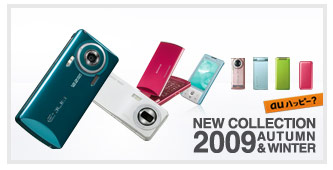Joint Innovation Lab Widget Platform
 SoftBank Mobile and Sharp join Joint Innovation Lab consortium on initiative for mobile widget specs – PR in English
SoftBank Mobile and Sharp join Joint Innovation Lab consortium on initiative for mobile widget specs – PR in English
 SoftBank Mobile and Sharp join Joint Innovation Lab consortium on initiative for mobile widget specs – PR in English
SoftBank Mobile and Sharp join Joint Innovation Lab consortium on initiative for mobile widget specs – PR in English
 Annual web survey conducted by Goo shows over 70% of Japanese own 1Seg Digital TV enabled handset [JPN]
Annual web survey conducted by Goo shows over 70% of Japanese own 1Seg Digital TV enabled handset [JPN]
 Mobile in Japan.. Provide Roadmaps Growth & Monetization [Pg. 29+] by Mary Meeker at Morgan Stanley via Web 2.0 Summit: PDF
Mobile in Japan.. Provide Roadmaps Growth & Monetization [Pg. 29+] by Mary Meeker at Morgan Stanley via Web 2.0 Summit: PDF
 KDDI held their Fall and Winter 2009 handset launch in Tokyo yesterday with a splash of new hardware on display for the upcoming season. The lineup has 13 new models in total; four coming Sharp, three by Kyocera, two each via Casio and Sony Ericsson and one from each Sanyo and Toshiba rounding out the pack. Most noticeable by all accounts is the jump to 12 mega-pixel camera spec. on both Sharp Aquos Shot models and the CA003 Exilim by Casio which also touts shooting 20 frames per second – thank you very much! The usual fancy touch&try Flash-style site is Here [Jpn] and our best effort machine translation is below.
KDDI held their Fall and Winter 2009 handset launch in Tokyo yesterday with a splash of new hardware on display for the upcoming season. The lineup has 13 new models in total; four coming Sharp, three by Kyocera, two each via Casio and Sony Ericsson and one from each Sanyo and Toshiba rounding out the pack. Most noticeable by all accounts is the jump to 12 mega-pixel camera spec. on both Sharp Aquos Shot models and the CA003 Exilim by Casio which also touts shooting 20 frames per second – thank you very much! The usual fancy touch&try Flash-style site is Here [Jpn] and our best effort machine translation is below.
Clearly the #2 operator has moved aggressively to address their device portfolio offering as they have struggled over the last 18-months with new customer additions. It should be interesting to see the December subscriber numbers and no doubt all eyes now on what DoCoMo and SoftBank have on tap, those announcements also expected very soon, to roll in the coming months as well.
 Congrats to DC! – Mixi invested 140 million yen, or approx. $1.5M, in Pikkle under the mobile application developer program [JPN]
Congrats to DC! – Mixi invested 140 million yen, or approx. $1.5M, in Pikkle under the mobile application developer program [JPN]
 SoftBank Mobile tops 108k net additions, edging KDDI at 102K, nearly double DoCoMo who saw 9k net loss of imode subs
SoftBank Mobile tops 108k net additions, edging KDDI at 102K, nearly double DoCoMo who saw 9k net loss of imode subs